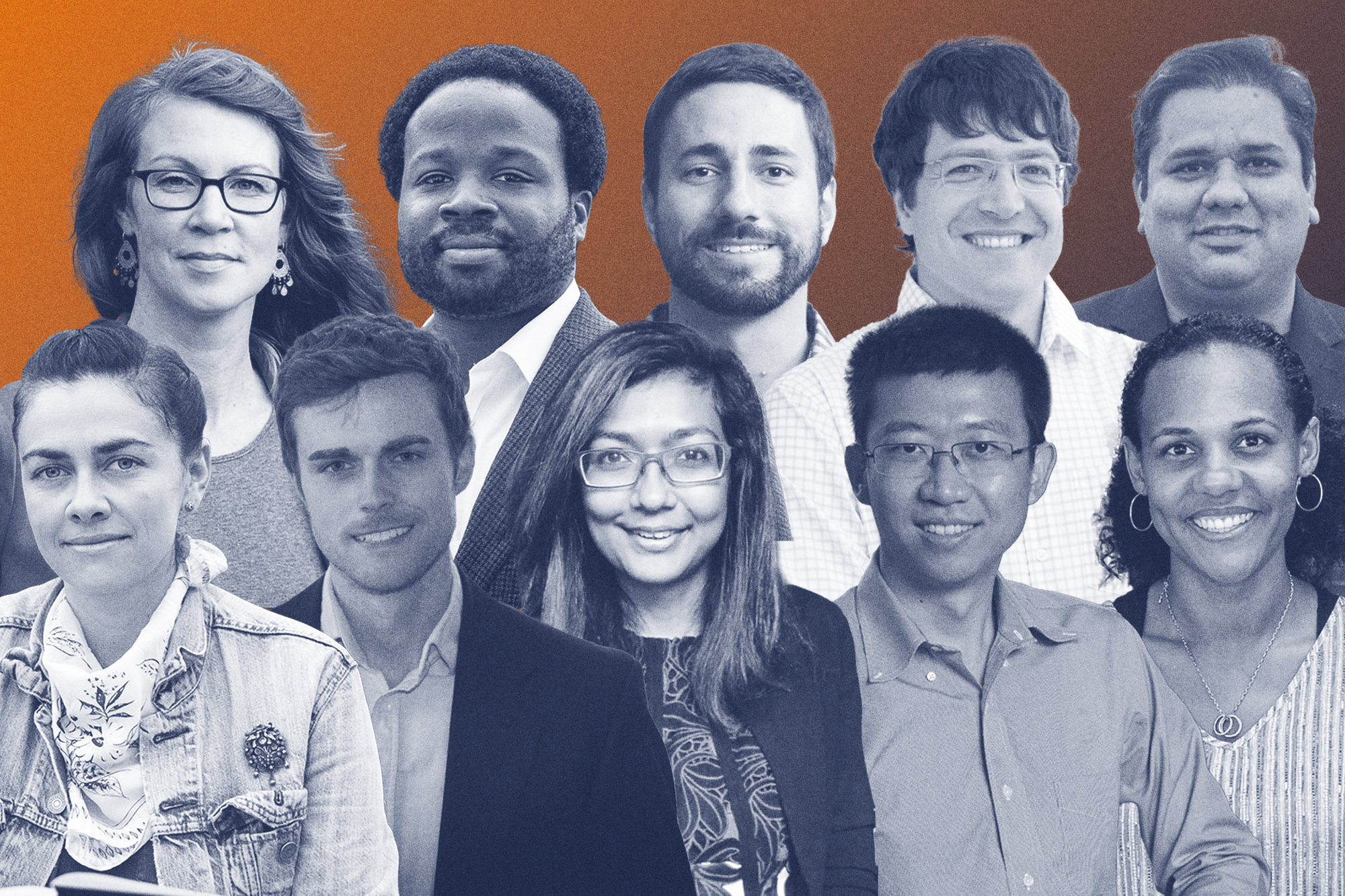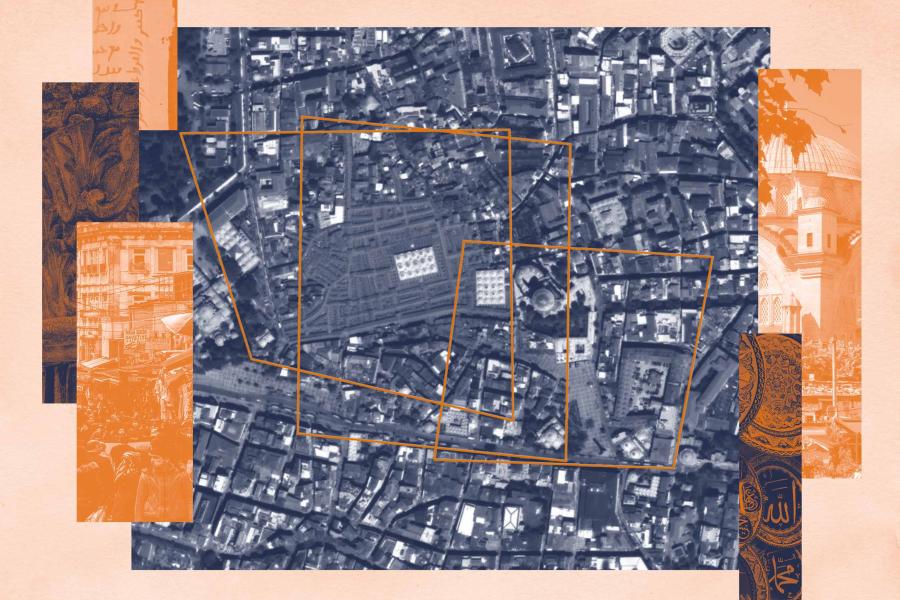From stopping deadly diseases to developing futuristic materials, from making self-driving vehicles smarter to studying global inequalities in pollution exposure, the University of Virginia’s early career faculty are more deeply involved than ever in making people’s lives safer, healthier and more efficient.
In 2021 so far, 12 UVA assistant professors have earned National Science Foundation Early Career Development Awards, among the most competitive and prestigious grants for science and engineering faculty in the first stages of their careers. That’s up from eight CAREER Awards in 2020, and four to five awards per year before then.
“The CAREER Award is given to early career researchers who have the potential to make a significant impact through their careers as academic researchers and educators,” Melur “Ram” Ramasubramanian, UVA’s vice president for research, said. “Getting 12 of these prestigious awards for our faculty so far this year is impressive, and really shows the great talent we have across the University.”
Meet the most recent UVA CAREER Award winners, whom NSF expects to become the next great leaders and role models in research and education.
Madhur Behl (School of Engineering and Applied Science, departments of Computer Science and Engineering Systems and Environment)
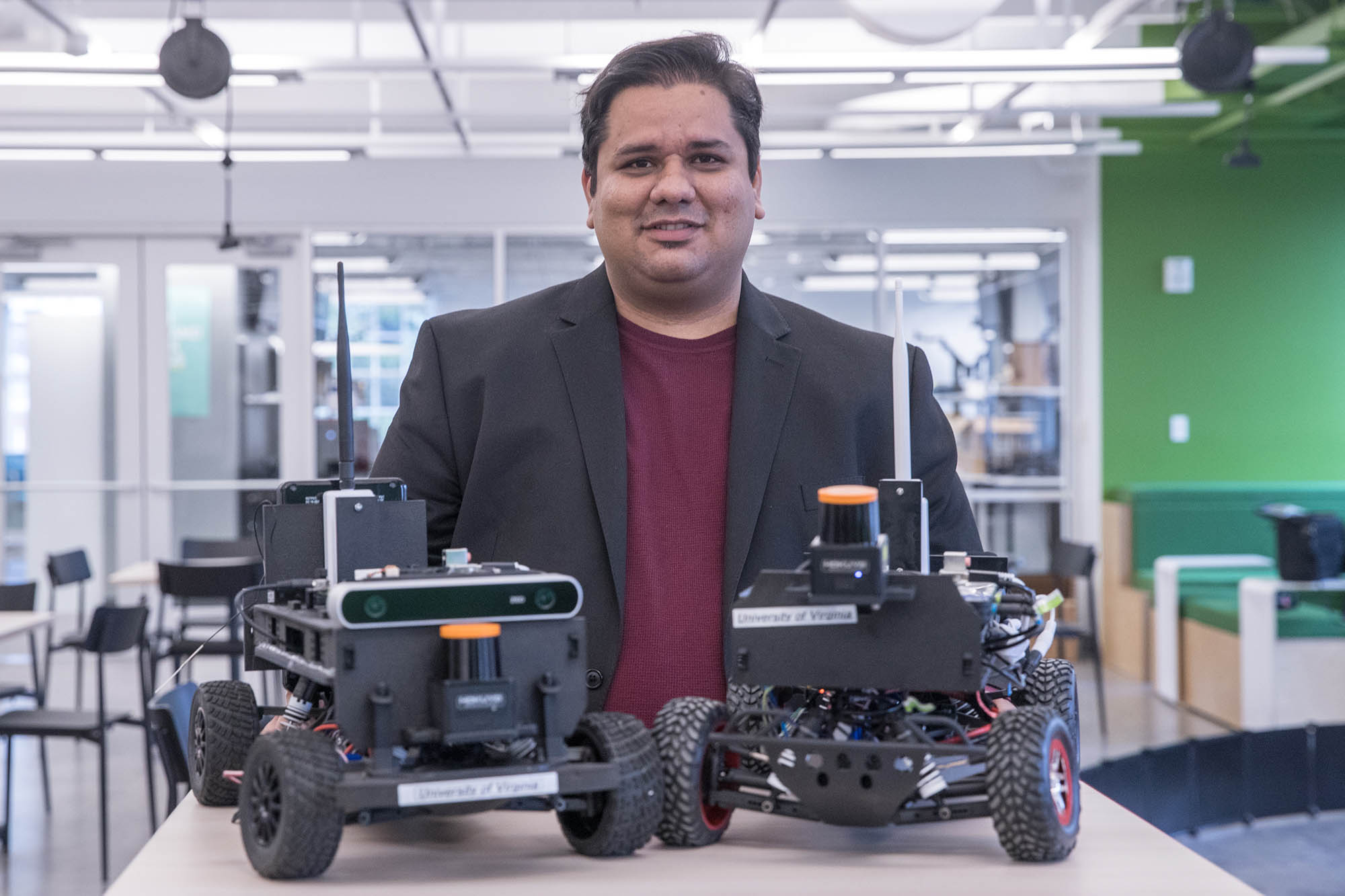
Photo by Sanjay Suchak, University Communications
In May 2020, Partners for Automated Vehicle Education shared results from a poll of 1,200 Americans about attitudes around autonomous vehicle technology. Three in four believed the technology was “not ready for primetime;” almost half indicated they would never ride in a self-driving car; and a fifth do not believe that autonomous vehicles will ever be safe.
The poll outlines the deep skepticism surrounding self-driving vehicles. Methods to improve – and prove – safety will be needed for broad-based acceptance. Behl’s pioneering research at UVA is accelerating safety for autonomous vehicles.
Using auto racing as a platform, Behl has invented artificial intelligence methods to agilely maneuver an autonomous vehicle while pushing the limits of its steering, throttle and braking capabilities. His novel racing research is creating advanced algorithms that hold the key to safer autonomous vehicles, enabling them to avoid collisions even when they encounter unexpected challenges at high speeds while close to obstacles or other vehicles.
Demonstrating their skills in programming a full-sized, fully autonomous race car, Behl and his student Cavalier Autonomous Racing team clocked the fastest laps from a U.S. university team in the historic Indy Autonomous Challenge, held Oct. 23 at the Indianapolis Motor Speedway.
Steven Caliari (School of Engineering and Applied Science, departments of Chemical Engineering and Biomedical Engineering)

Photo by Tom Cogill
Fibrosis, the stiffening of normally soft or pliant living tissue, contributes significantly to about 40% of the overall deaths in the developed world.
“Yeah, it’s a hell of a stat,” Caliari said. “But that’s because fibrosis, or chronic scarring, itself isn’t a disease; it’s an outcome of many different diseases.”
The list includes some cancers, viral infections such as hepatitis, and idiopathic pulmonary fibrosis, a cruel condition in which scar tissue grows in the lungs, restricting the flow of oxygen. “Idiopathic” means the disease has no known cause. It has no cure, either.
Researchers like Caliari believe stopping or even reversing the progression of fibrosis is possible, but they need to know a lot more about what is happening in the body to make cells go from normal to a diseased state. Caliari is using biomaterials developed in his lab to open a window on that process.
Caliari’s plans include partnering with the UVA chapter of the Society of Hispanic Professional Engineers to develop teaching modules on biomaterials concepts for elementary school students and initiating a high school summer research program involving labs in UVA’s Fibrosis Initiative.
Robert Gilliard (Arts & Sciences, Department of Chemistry)
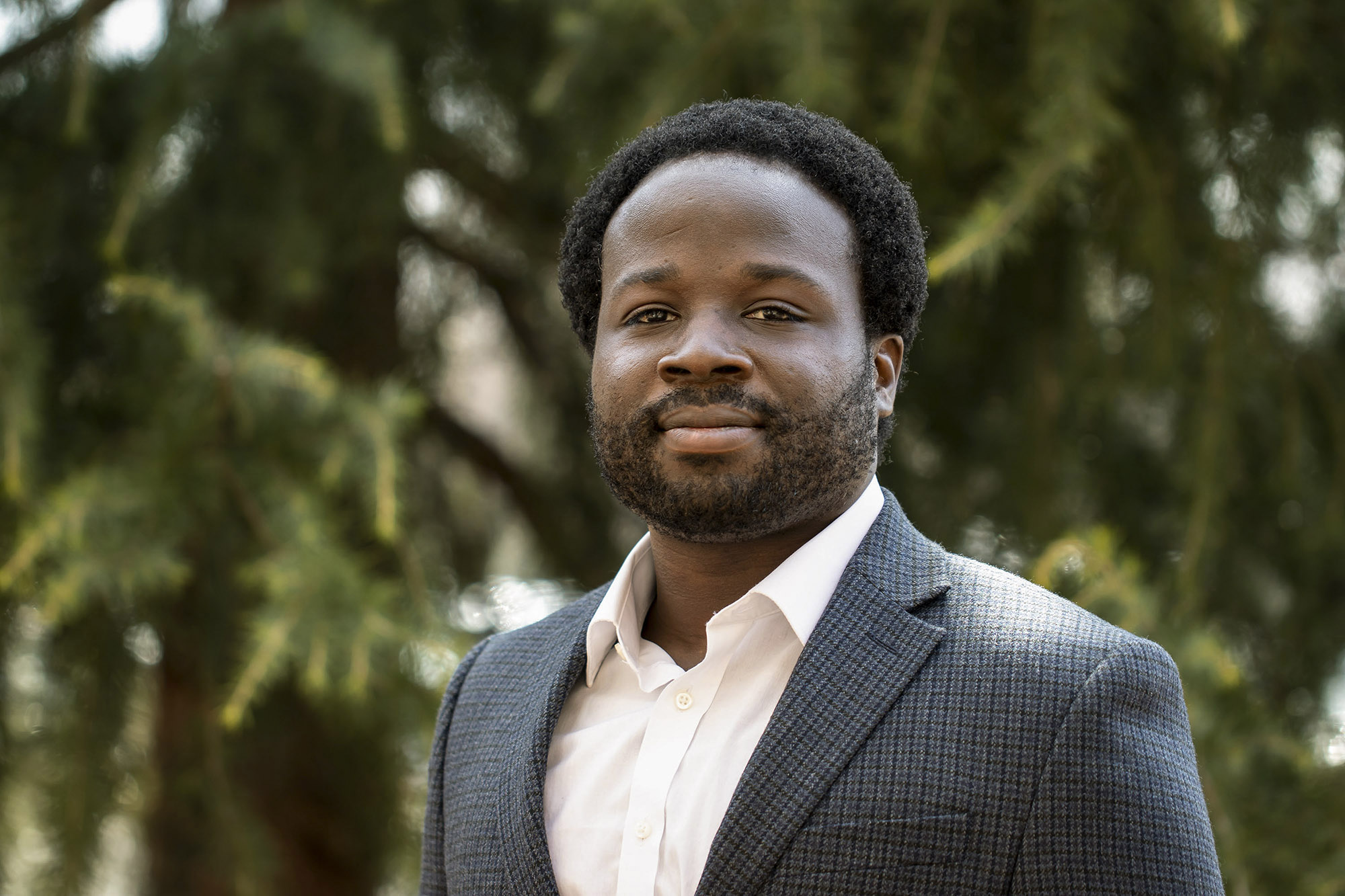
Photo by Molly Jordan Angevine
Holographic displays, color-changing frames and pliable screens are just a few of the innovations the next generation of smartphones may offer. And while engineers and coders will be responsible for making much of that technology possible, there’s a good chance we’ll also need to thank Gilliard.
Gilliard explores strategies for incorporating boron into chemical compounds to help him understand how to harness the element’s unique capacity to carry and transfer electric charge and to produce the colors displayed by our cellphones and electronic devices.
“In collaboration with the chemical engineering department here at UVA, we’ve already started to explore the applications of some of these boron-based materials, and we’re seeing that the utility is probably going to be pretty important going forward,” Gilliard said.
His research may also make components in those devices more stable over time, less expensive to produce and less harmful to the environment.
“This is the technology that has resulted in your lights in your home lasting much longer than they did even five years ago,” Gilliard said.
“We have a unique potential to be one of the leaders in this area of boron chemistry,” he added. “There are not many people in the United States exploring these areas of chemistry, and increasing our ability to compete globally in this area of science is extremely important.”
Jennifer Güler (Arts & Sciences, Department of Biology)
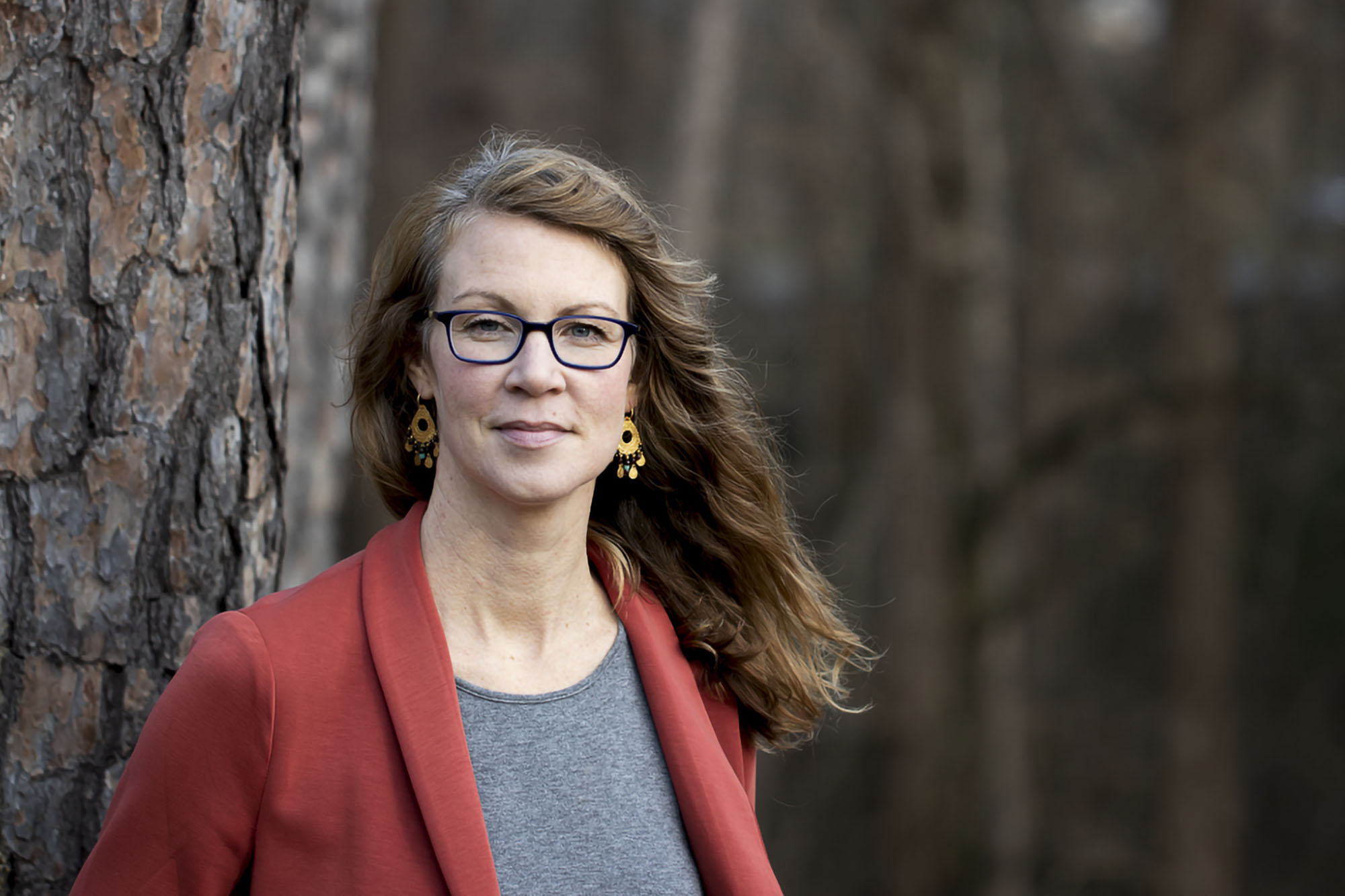
Photo by Molly Jordan Angevine
As we struggle to come to terms with the fact that more than half a million lives have been lost to COVID-19 in the United States, it can be easy to forget that nearly as many people die from malaria worldwide every single year.
Malaria is caused by a single-celled, mosquito-borne parasite, but like a virus, it can adapt to survive a variety of challenges that could wipe it out completely. Güler studies how the malaria parasite responds to changes in its environment that are hostile to its survival.
Over the course of its life cycle, the malaria parasite must be able to adapt to the conditions that allow it to survive in the body of a mosquito, in the liver of an infected host or in a host’s bloodstream before it infects another mosquito. Evolution has also equipped it with the capacity to develop a resistance to the drugs that researchers develop to defeat it. Güler uses a powerful combination of laboratory studies and computational modeling to understanding the complexities of the cellular behaviors that make the malaria parasite so resilient.
“The CAREER Award will help us look, specifically, at how the parasites respond to stress, so if they’re in one of these new environments and it’s stressful for them – maybe there’s a limiting nutrient or a drug present and it’s causing stress – what sort of programs are going on inside that cell that allow it to survive?” Güler said. “Ultimately, what we learn could help us find a better way to treat this disease.”
Samira Khan (School of Engineering and Applied Science, Department of Computer Science)
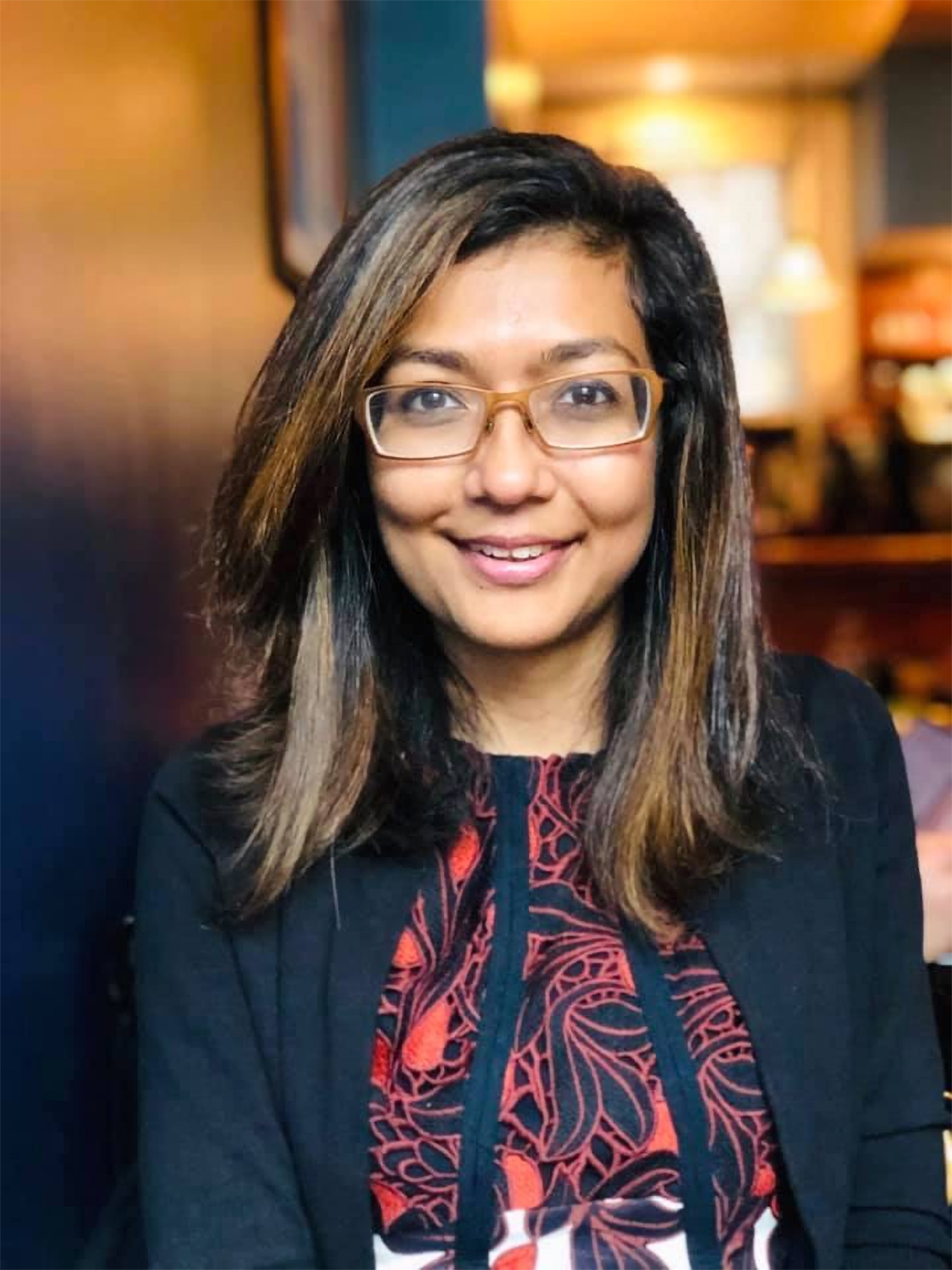
Contributed photo
The National Science Foundation places a priority on inventing new computing and networking technologies. The need is urgent, because such technologies will help researchers use big data sets to find solutions for complex global challenges.
The problem is that the amount of data available globally has outpaced the processing power needed to analyze it. International Data Corporation predicts that the collective sum of the world’s data will grow to 175 zettabytes – 175 trillion gigabytes – by 2025, a massive data explosion compared to 4.4 zettabytes available in 2015.
Khan is developing revolutionary computer architectures that will make problem-solving with big data possible.
“Datasets are so large they must be broken up into bundles across multiple computers in a data center,” Khan said. “Computations get bottlenecked as larger and larger data packets get moved from computer to computer in progression to a single processor.”
Khan’s research aims to redesign programmable switches and smart network interface cards to allow data to be processed in transit instead, a fundamental redesign of outdated computer infrastructure. Her research team has built the first protype network that uses the revolutionary architecture, making data requests four times faster.
In the real world, this would mean people could update their social media or make online transactions, like purchasing tickets, lightning-fast compared to today.
“Reducing the amount of data that needs to be moved to that single point of processing dramatically speeds things up and fuels the entire system’s capacity,” Khan said. “We are expecting that processing in the reconfigured network will achieve more than 10-fold increases in processing speeds for scientific and machine-learning workloads.”
Seanna Leath (Arts & Sciences, Department of Psychology)
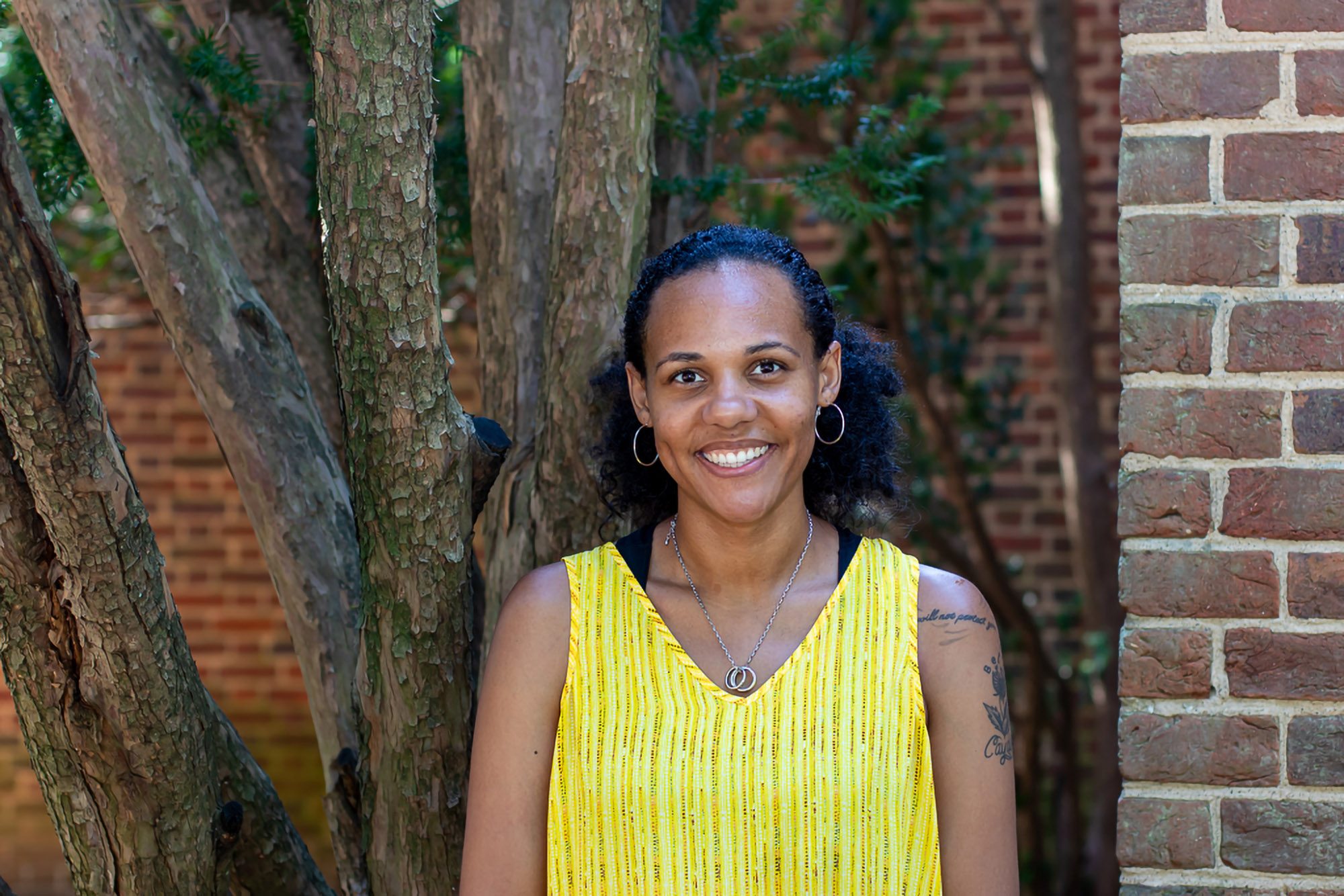
Contributed photo
Despite the fact that the STEM workforce has shown considerable growth in recent years, Black workers, and especially Black women, remain underrepresented in the fields of science, technology, engineering and math. And according to a study of trends in STEM degrees by the Pew Research Center, the gap is unlikely to narrow any time soon. For Seanna Leath, an assistant professor of psychology, universities have a critical part to play in addressing Black women’s retention in STEM fields.
Leath’s CAREER award will allow her to explore how improving the academic, social and psychological wellbeing of Black college women will help attract them to the study of STEM disciplines and allow them to thrive as students. Funding from the award will allow Leath to develop longitudinal surveys and interview tools to assess Black undergraduate women’s experiences over a four-year period, and using the data she collects, she hopes to identify the most important factors affecting the motivation and retention of Black women in STEM degrees.
Sally Pusede (Arts & Sciences, Department of Environmental Sciences)

Photo by Dan Addison, University Communications
You might think that air pollution is an equal-opportunity threat, but there is a solid body of evidence suggesting that not everyone who lives in urban areas experiences the same level of exposure, which means that some communities are faced with a lower quality of life and a lower life expectancy.
Using a variety of airborne and ground-based data-collection methods, Pusede, an atmospheric chemist, is interested in advancing science’s understanding of how variations in exposure to airborne pollutants occur in urban areas and why.
With the help of the CAREER award, Pusede will conduct field work in Dakar, Senegal, which will lead to the training of U.S. and Senegalese students in an international collaboration of physical and social scientists that will involve collecting and integrating scientific data and demographic information from a wide range of sources to shed light on inequalities in pollutant exposure and their consequences.
Pusede’s project will also include the development of educational and public-outreach activities based on her research, including the development of a middle-school curriculum aimed at encouraging students’ interest in the STEM fields and demonstrating how those fields can help advance the cause of environmental justice.
Daniel Quinn (School of Engineering and Applied Science, departments of Mechanical and Aerospace Engineering and Electrical and Computer Engineering)
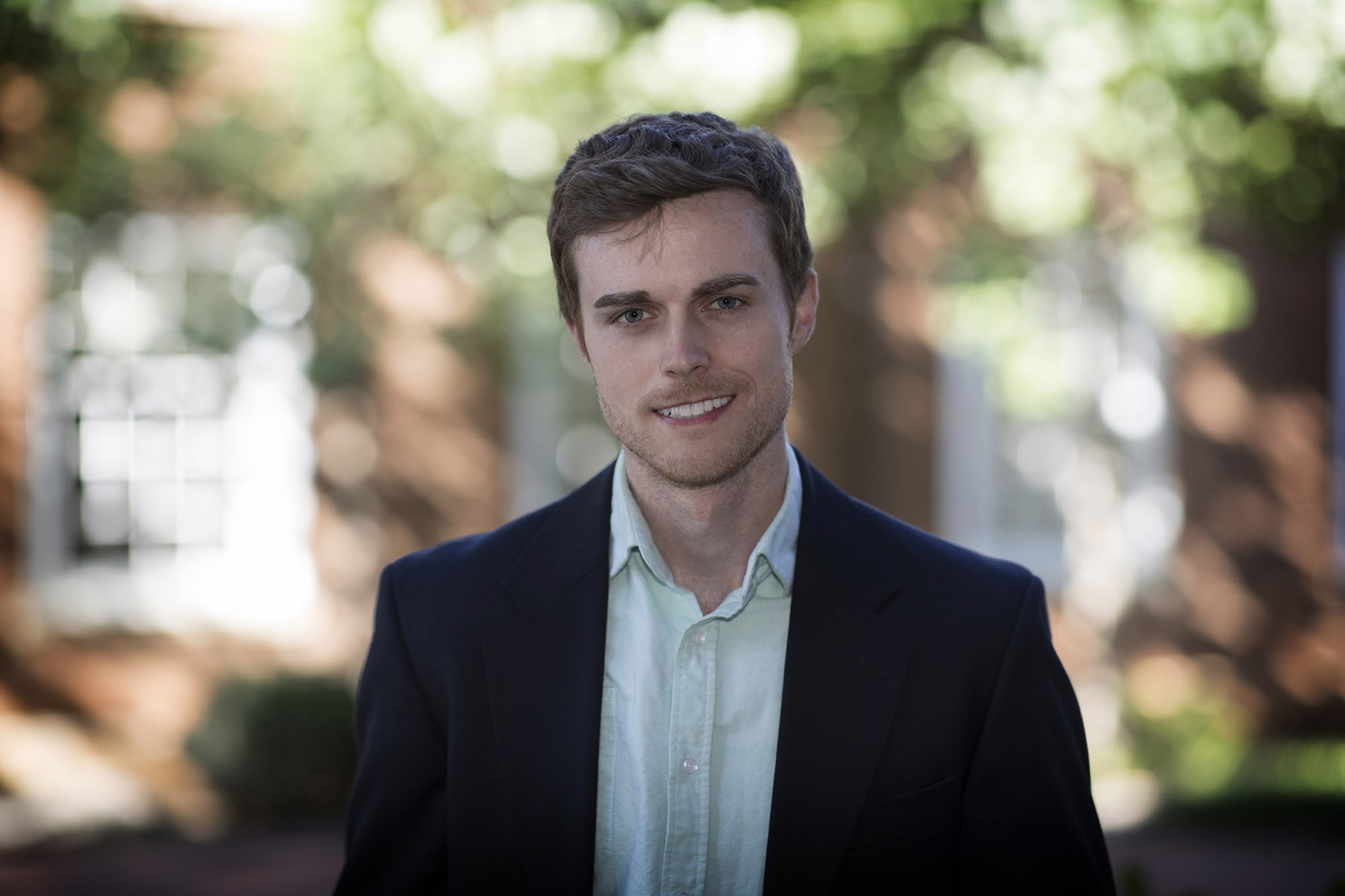
Photo by Dan Addison, University Communications
Did you know that a tuna is a super swimmer?
“They’re really fast, they’re really strong, they’re big, they’re at the top of their food chain without any natural predators. They’re a model organism for roboticists because they’re phenomenal swimmers,” Quinn said. “Besides being fast, tuna dart back and forth very quickly – complex, high-speed maneuvers – and we’re not sure how they do it.”
Quinn is using his CAREER Award to find out. His Smart Fluids Systems Lab is using a tuna model rigged up to “swim” inside a tank to try to discover how liquids flow past the fish — a process called fluid dynamics – and govern high-speed, irregular or “asymmetric” swimming.
By mapping out these flows, bio-inspired roboticists who have to rely on models of low-speed, regular or “symmetric” movements when designing and testing robots will have the information they need to start modeling and designing fast, highly maneuverable water and aerial drones. Even though Quinn is studying swimming, the principles of fluid dynamics apply to water and air propulsion, so his research will inform both.
“We’ll be creating the first-ever flow visualizations of bio-inspired robots darting side-to-side,” Quinn said. “Our measurements could lay the groundwork for a new generation of intelligent swimming and flying machines.”
Peter Schauss (Arts & Sciences, Department of Physics)
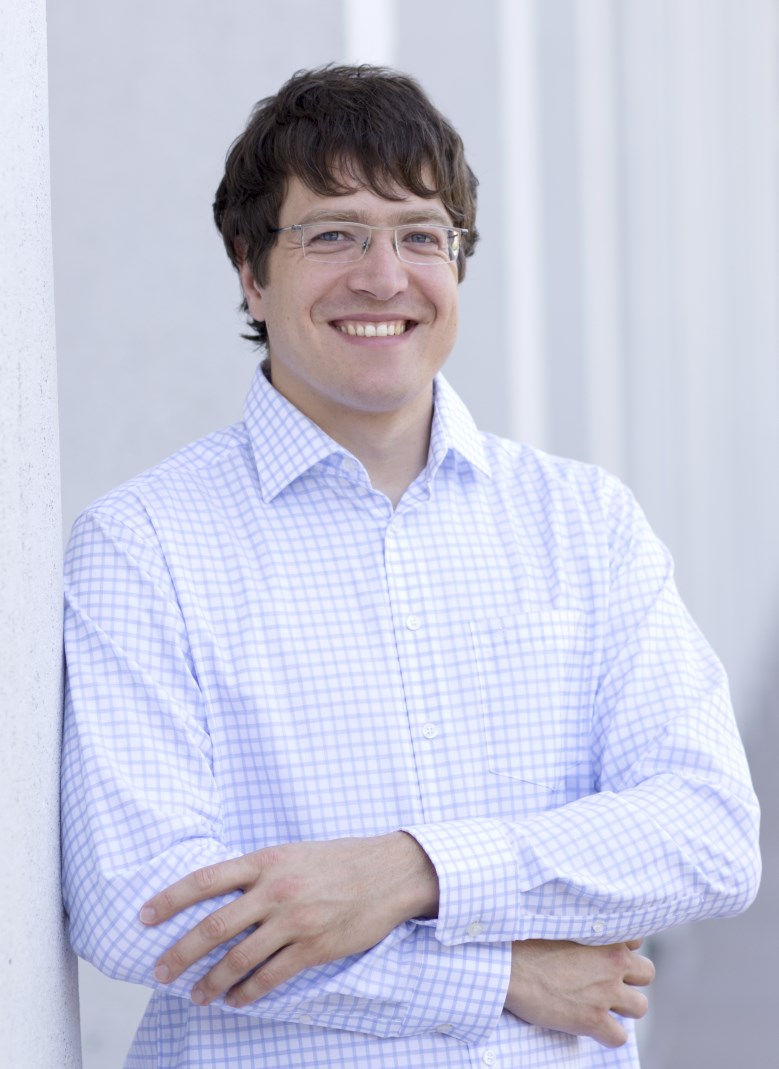
Contributed photo
According to the U.S. Energy Information Administration, approximately 5% of the energy that is generated by power plants in the country is lost to resistance in the power lines used to transmit energy to homes and businesses, and the complexity of the problem at the atomic level makes it difficult for researchers to understand exactly what properties of the electrons involved might lead to the ability to conduct current without resistance.
Direct imaging of electrons is almost impossible, but quantum simulation can shed light on the microscopic properties of these complex quantum systems. CAREER winner Peter Schauss, an assistant professor of physics who specializes in experimental atomic, molecular and optical physics, will use funding from the award to develop quantum simulations using atoms cooled to a few billionths of a degree and trapped in an artificial crystal of light. Using a quantum gas microscope with high-resolution imaging capabilities that will allow him to capture images of individual atoms, he’ll search for answers that could lead to the next generation of superconductors.
Bi-Cheng Zhou (School of Engineering and Applied Science, Department of Materials Science and Engineering)
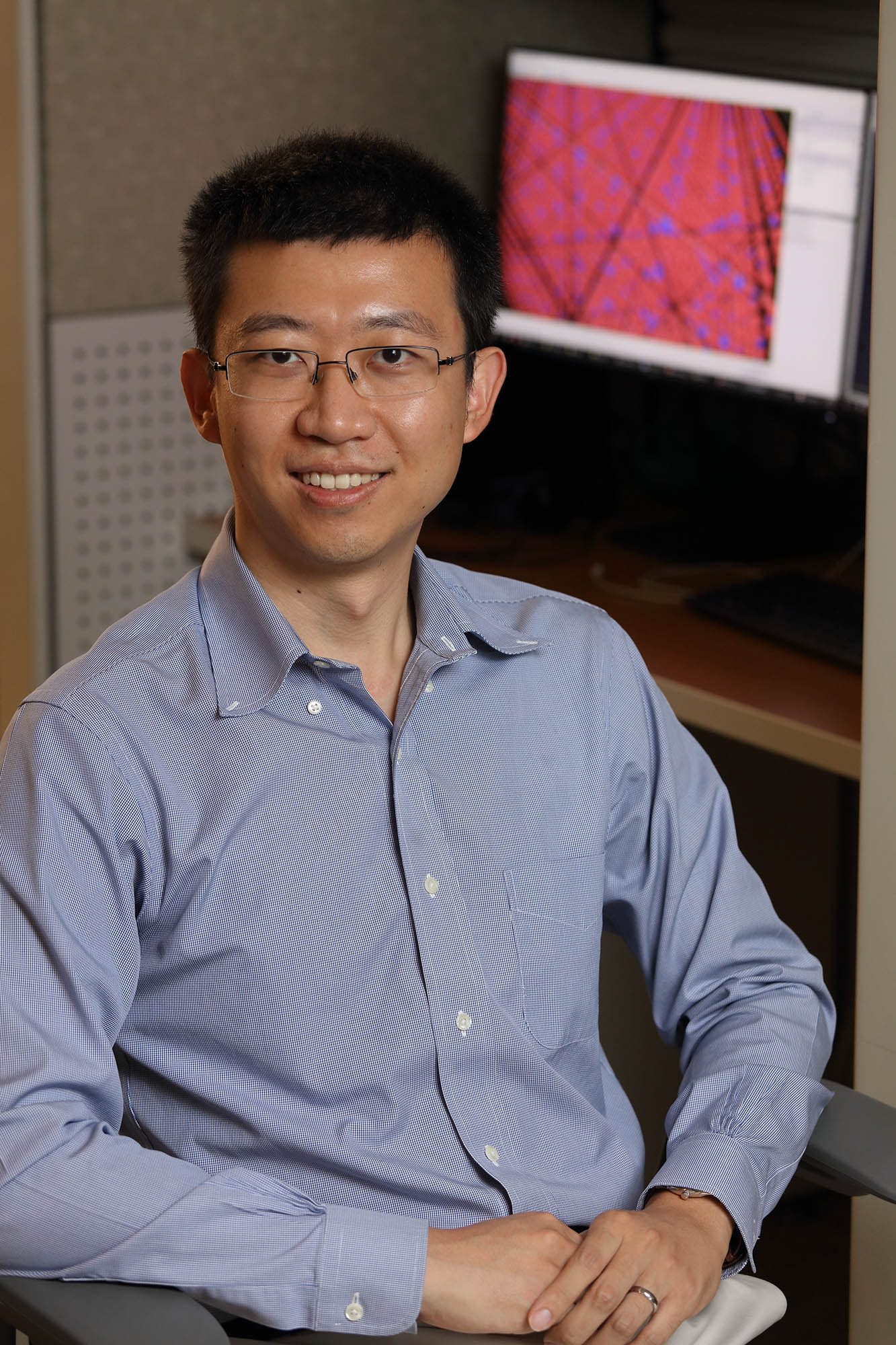
Photo by Tom Cogill
In this modern age of materials, complex alloys lighten the weight of cars and planes to save fuel and help the environment, biomaterials replace human joints so we can remain active into our elder years, and graphene-coated smart screens put us in touch – literally – with individual creativity and global commerce.
These breakthroughs demonstrate the power of nanotechnology, a term introduced in 1974 to describe the precision machining of materials to the atomic scale. While experimentation, development and commercialization of nanomaterials has evolved, the textbook model describing how and when a material changes its form remains stuck in the 1970s.
Zhou has a plan to bring this model into the modern age and democratize materials design. He will use his CAREER Award to innovate a valuable tool in alloy development called the CALPHAD method, which stands for CALculation of PHAse Diagrams.
“My grand vision is to make computational tools easy to use and valuable for all materials scientists,” Zhou said.
Editor’s note: Two additional faculty members from UVA earned CAREER Awards, but are no longer with the University.
